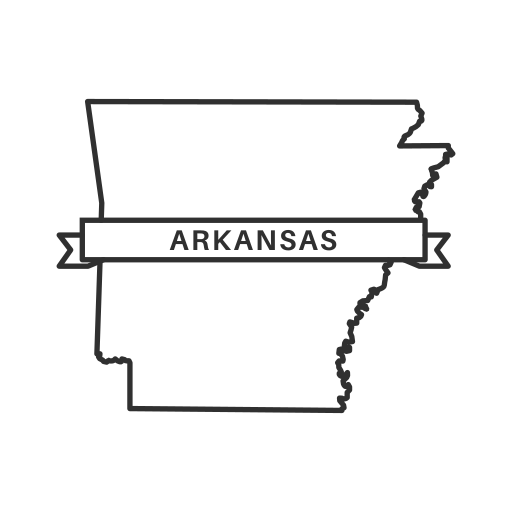Arkansas Child Abuse Statistics 2023: Facts about Child Abuse in Arkansas reflect the current socio-economic condition of the state.

LLCBuddy editorial team did hours of research, collected all important statistics on Arkansas Child Abuse, and shared those on this page. Our editorial team proofread these to make the data as accurate as possible. We believe you don’t need to check any other resources on the web for the same. You should get everything here only 🙂
Are you planning to start an Arkansas LLC business in 2023? Maybe for educational purposes, business research, or personal curiosity, whatever it is – it’s always a good idea to gather more information.
How much of an impact will Arkansas Child Abuse Statistics have on your day-to-day? or the day-to-day of your LLC Business? How much does it matter directly or indirectly? You should get answers to all your questions here.
Please read the page carefully and don’t miss any words.
On this page, you’ll learn about the following:
Top Arkansas Child Abuse Statistics 2023
☰ Use “CTRL+F” to quickly find statistics. There are total 18 Arkansas Child Abuse Statistics on this page 🙂Arkansas Child Abuse “Latest” Statistics
- According to education expert Elizabeth Siebuhr, 47% of the 929 children at the Children’s Advocacy Center of Benton County made complaints about sexual abuse.[1]
- Of the 794, 517 children that are confirmed for abuse, 59% were classified as neglect, 4% were emotional abuse, 8% were sexual abuse, and 11% were physical abuse.[2]
- The National Center for Injury Prevention and Control disclosed that a total of 58,000 investigations of child abuse or maltreatment were conducted in Arkansas back in 2007.[2]
- According to data, 39% of children were victims of abuse and neglect from 2012-2019, and at least 107 of them had at least one interaction with Arkansas family care providers or state police.[3]
- In the data released by federal mortality statistics, Arkansas’s rate of child fatalities from assault-related causes such as abuse and neglect places 5th among the states, with an average of 2.9 children per 100,000 from 2012 to 2017.[3]
- According to the analysis of state data conducted by Arkansas Democrat-Gazette, Francesca was one of more than 100 kids who passed away between 2012 and 2017, whose families had been inspected by child welfare workers or state police before their deaths.[3]
- Maltreatment sufferers percentage of abuse cases per 1000 children only, number rate of involved cases sexual abuse alone, not physical abuse.[4]
- The data released by the 2017-2018 National Survey of Children’s Health shows that there.s a 14.1% increase in children entering foster care from the fiscal year 2012-2018 compared to the fiscal year 2008-2012.[3]
- Out of all the rates of child sexual abuse in the country in 2020, Arkansas has the highest rate with 254 cases per 100,000 children.[3]
- The recent survey data shows that 0.18% of children were maltreated while in foster care from 2016 – 2020.[5]
- The data from cwoutcomes.acf.hhs.gov shows that 6.78% of children experience a recurrence of child abuse or neglect from 2016 – 2020.[5]
- According to state statistics, there are around 570 family care employees employed by the human services department under the division of children and family services, and their average annual salary is $37763.[3]
- In Arkansas, White County, there are a reported 800 cases of child abuse every year.[6]
Arkansas Child Abuse “Abuse” Statistics
- Statistics released by Rape, Abuse and Incest National Network show that 1 in 9 girls and 1 in 53 boys have experienced sexual assault or abuse from an adult.[3]
Arkansas Child Abuse “Other” Statistics
- According to safehome.org, 767,000 sex offenders are currently registered across the nation and 18,000 of those live in Arkansas, which equates to 600 sex offenders per 100,000 residents.[3]
- According to data available to the public, the average annual income for Crimes Against Children Division investigators is roughly around $41,796, with an estimated 40 investigators on staff.[3]
- The former investigation head at the Crimes Against Childer Division has publicly disclosed that the state police, at one point, had to replace roughly 20% to 25% of its detectives on a regular basis.[3]
- Of the 72% of murder-suicides involving an intimate partner, 94% of the time, the victims are female.[6]
Also Read
- Alaska Child Abuse Statistics
- Arizona Child Abuse Statistics
- Arkansas Child Abuse Statistics
- California Child Abuse Statistics
- Colorado Child Abuse Statistics
- Connecticut Child Abuse Statistics
- Florida Child Abuse Statistics
- Georgia Child Abuse Statistics
- Illinois Child Abuse Statistics
- Indiana Child Abuse Statistics
- Iowa Child Abuse Statistics
- Kansas Child Abuse Statistics
- Kentucky Child Abuse Statistics
- Louisiana Child Abuse Statistics
- Maine Child Abuse Statistics
- Maryland Child Abuse Statistics
- Michigan Child Abuse Statistics
- Minnesota Child Abuse Statistics
- Montana Child Abuse Statistics
- Nebraska Child Abuse Statistics
- Nevada Child Abuse Statistics
- New Hampshire Child Abuse Statistics
- New Jersey Child Abuse Statistics
- New York Child Abuse Statistics
- North Dakota Child Abuse Statistics
- Ohio Child Abuse Statistics
- Oregon Child Abuse Statistics
- Rhode Island Child Abuse Statistics
- South Carolina Child Abuse Statistics
- South Dakota Child Abuse Statistics
- Tennessee Child Abuse Statistics
- Texas Child Abuse Statistics
- Utah Child Abuse Statistics
- Vermont Child Abuse Statistics
- Virginia Child Abuse Statistics
- Washington Child Abuse Statistics
- West Virginia Child Abuse Statistics
- District of Columbia Child Abuse Statistics
How Useful is Arkansas Child Abuse
Arkansas, like many other states, has laws and regulations in place to help protect children from abuse. However, the effectiveness of these measures can vary widely depending on a variety of factors, including the resources available and the willingness of individuals to report suspected cases of abuse. While Arkansas does have a Child Abuse Hotline that individuals can call to report suspected cases of abuse, it is essential to recognize that many cases of abuse go unreported.
One of the challenges in addressing child abuse is the lack of awareness and education about the signs and symptoms of abuse. Many people may not know what to look for or how to respond when they suspect abuse is taking place. Additionally, there may be barriers to reporting abuse, such as fear of retaliation or concerns about not being taken seriously.
Furthermore, the complex nature of child abuse cases can make them challenging to investigate and prosecute. Oftentimes, there may be limited evidence or conflicting accounts of what occurred, making it difficult to hold abusers accountable for their actions. Additionally, child abuse cases can be emotionally draining for all parties involved, including the children who have been abused, their families, and the professionals working to address the abuse.
Despite these challenges, it is essential for the state of Arkansas to continue to prioritize efforts to prevent and address child abuse. This includes increasing access to resources and support services for families at risk of abuse, providing training and education for professionals who work with children, and raising awareness about the signs and symptoms of abuse within the community.
It is also critical for individuals to take action if they suspect abuse is taking place. This could include reporting suspected cases to the appropriate authorities, offering support and resources to families in need, and advocating for policies and practices that prioritize the safety and well-being of children.
Ultimately, the issue of child abuse is a complex and multifaceted problem that requires a coordinated and comprehensive response from all sectors of society. By working together to prevent abuse, raise awareness, and support victims, we can make a positive impact on the lives of children in Arkansas and beyond.
Reference
- 5newsonline – https://www.5newsonline.com/article/news/crime/arkansas-national-ranking-sex-offenders-per-capita/527-8b0cf5b1-9394-43de-9009-f8633df1722a
- uams – https://psychiatry.uams.edu/ar-best-for-children/child-abuse-statistics/
- arkansasonline – https://www.arkansasonline.com/childabuse/
- childrensdefense – https://www.childrensdefense.org/policy/resources/soac-2020-child-welfare-tables/
- hhs – https://cwoutcomes.acf.hhs.gov/cwodatasite/pdf/arkansas.html
- wcfarkansas – https://www.wcfarkansas.org/statistics/
- childsafetycenter – https://childsafetycenter.org/statistics/
